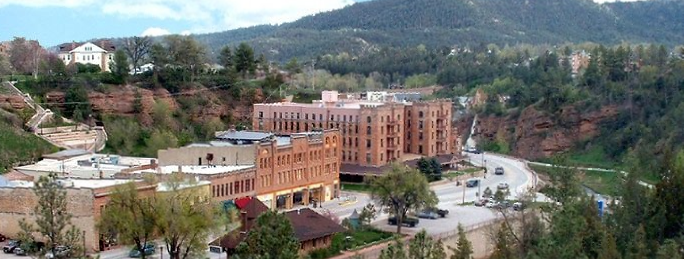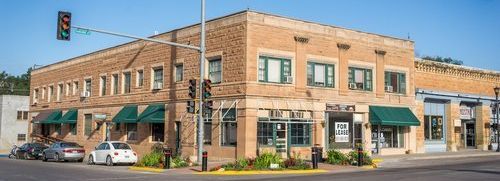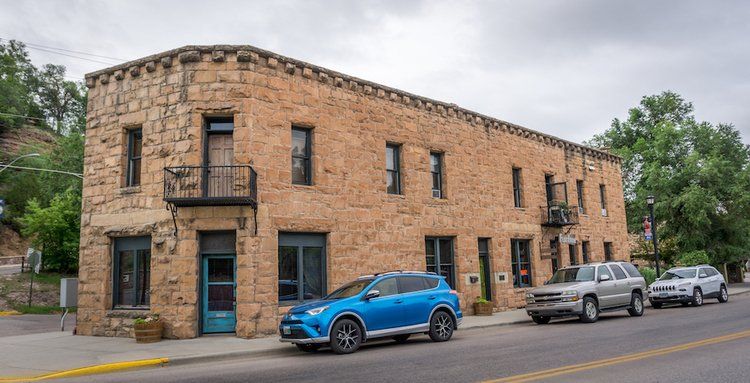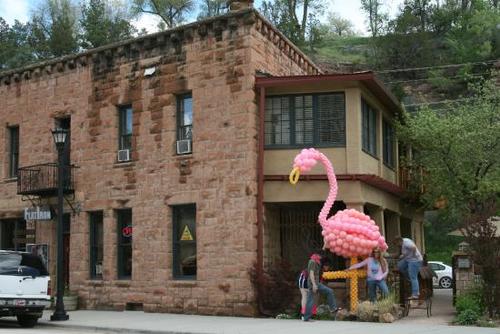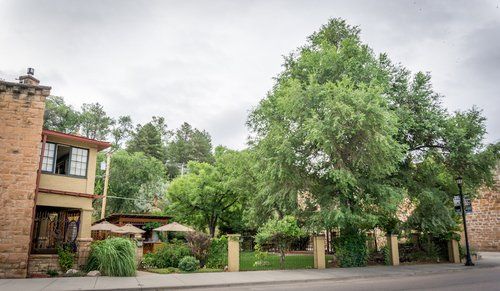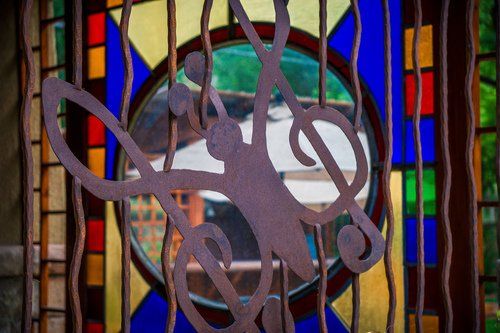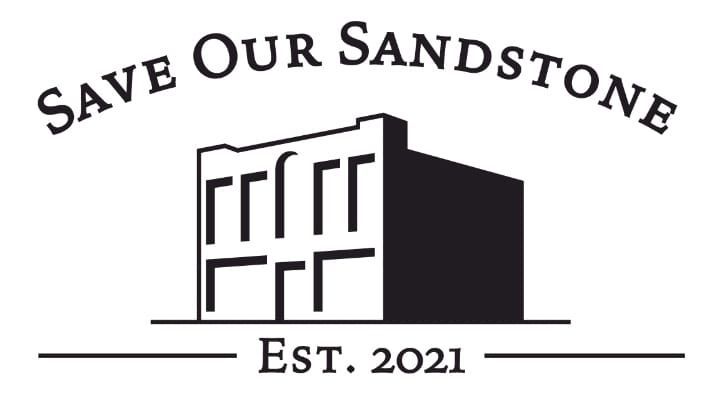Gibson House aka The Flat Iron
🧱 Gibson House aka Flat Iron Building
Address: 745 North River Street, Hot Springs, SD 57747
Built:
1911
First Occupant:
Gibson Hotel
Current Occupant: Flat Iron Airbnb
Architect:
Unknown
Contractor:
George Gibson
Sandstone Quarry:
Unknown
Architectural Style:
Two-story, quarry-faced sandstone with denticulated cornice, large foundation stones, and a distinctive “flat iron” footprint.
📜 Historical Overview
George Gibson, one of Hot Springs’ earliest settlers, operated the Minnekahta Hotel from 1905 until a devastating fire on January 2, 1911, destroyed the building. Only a piano near the front door was saved. Gibson, who had been brought to Hot Springs by Fred T. Evans during the city’s boom years, quickly sought a new site for his next venture.
He purchased two lots from Mrs. Fred T. Evans on River Avenue, just below the incline walk to the Sanitarium. Known locally as “the old flatiron,” the parcel had been excavated years earlier and had a foundation in place for a hotel that was never built. Gibson used the site to erect a two-story sandstone hotel measuring 16.5' x 60' x 50' x 41'.
Opening in September 1911, the Gibson Hotel quickly earned a reputation as one of the most popular dining establishments in the Black Hills. By 1922, Gibson began a 30' x 50' sandstone addition to create five spacious apartments with furnace heat, hot and cold running water, multiple baths, and toilets. A wide veranda was also added to the south side. Locals began referring to the intersection as “Gibson Corner.”
In May 1936, the apartments were renovated and modernized. Following Gibson’s death, his estate sold the property in April 1946. He also donated his homestead to the Evergreen Cemetery Association.
📍 Modern Era
The “flat iron” footprint of the Gibson House still defines its presence at the northern entry to downtown Hot Springs. Now operating as the Flat Iron Airbnb, the building retains its distinctive form and sandstone character.
🔍 Research Notes & Requests
Save Our Sandstone is still seeking:
- Original architectural drawings of the 1911 and 1922 construction phases
- Early photographs of the hotel’s dining rooms and veranda
- Records of apartment tenants from the 1920s–1940s
QR Code Info: Opened in 1911 by George Gibson on a distinctive flatiron-shaped lot, the Gibson Hotel quickly became one of the Black Hills’ most popular dining spots. Built from local sandstone, the two-story building featured a unique footprint and solid craftsmanship. A 1922 addition created spacious apartments, and the building remained a local landmark for decades. Today, it operates as the Flat Iron Airbnb, preserving its historic character.
